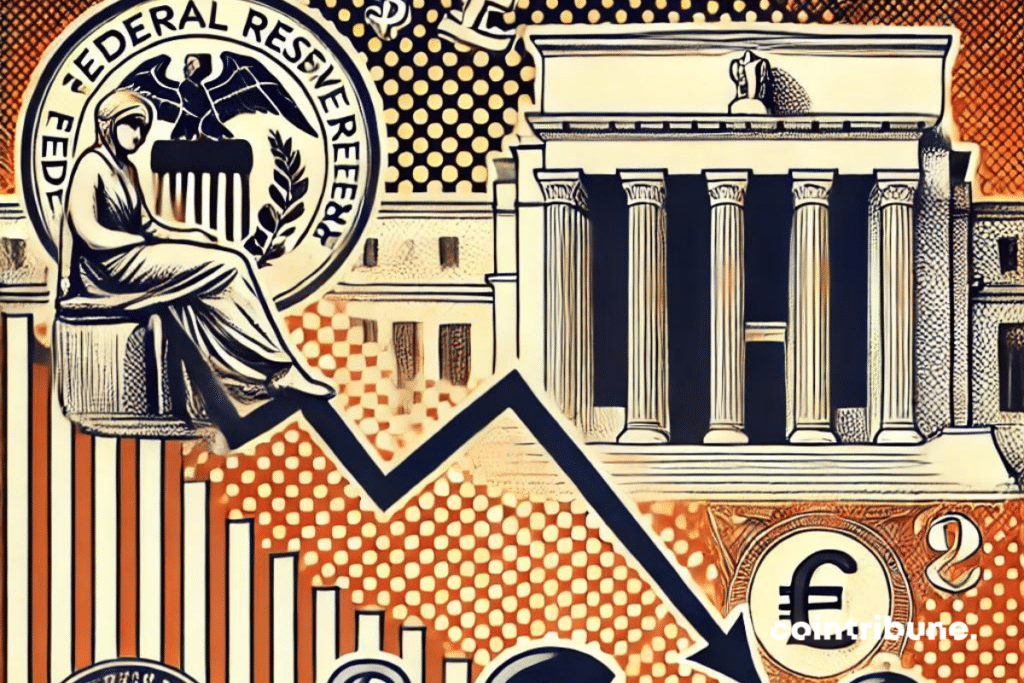8:00 AM ▪
5
min reading ▪ acc
The barons of the US central bank can be pleased: their relentless efforts against inflation seem to be bearing fruit. In September, data showed a slight drop in inflation to 2.4%, below expectations. Behind these seemingly reassuring statistics, however, other data distort the economic picture. Indeed, the labor market is showing unexpected signs of weakness, leaving room for doubt about future stability.

Inflation: Between Decline and Persistent Concerns
Inflation, which was 2.5% in September, finally reached 2.4%which is certainly a number below forecasts, but which deserves careful examination. Sure, decrease in energy prices by 1.9%, contributed to this calm.
But be careful rising food and housing prices played spoilsport: +0.4% for food and +0.2% for shelter. It is even more disturbingcore inflationwhich excludes these volatile categories still remains to 3.3%a more difficult character to tame.
So why this persistence? The answer could be hidden in the subtleties of the market. Despite slowing inflation, some sectors like it the prices of health care (+0.7%) and clothing (+1.1%) continue to rise.
It is important to note that more than a third of the inflation calculation is based on housing costs and these, although down 4.9% year-on-year, remain higher than expected.
Key elements of this inflation:
- Increase in food prices: +0.4%;
- Decrease in energy prices: -1.9%;
- Price of used vehicles: +0.3%.
Suffice it to say that despite the effectiveness of the Fed’s policies, some inflation trends remain stubbornespecially as a result of external factors such as climate events and supply chain disruptions.
Economy: Upheavals in the labor market
While inflation appears to be stabilizing, the labor market is beginning to weaken. The number of applications for unemployment benefits reached 258,000 in the first week of Octoberwhich is a surprising increase compared to previous weeks. in the question the double whammy of Hurricane Helene and the Boeing workers’ strike. The two events had a big impact on some states, especially Florida and Michigan, where unemployment numbers jumped.
This calls into question the near-term strength of the US economy. If we take a closer look, experts question whether this fragility could limit upcoming interest rate cuts planned by the Federal Reserve. We remind you that at the beginning of September it recorded a decrease of 50 basis points.
With the labor market weaker than expected, it may be risky to cut rates too quickly, although some expect this to remain inevitable until November.
Moreover, while monetary policy appears to have a positive impact on inflation, it is increasingly clear that other aspects of the economy, such as consumption, could also be affected. Used car and health care prices continue to riseand household spending, while less volatile than energy or food, could be dampened by rising unemployment.
Despite the encouraging signals, some analysts are surprising with the argument that we have to love inflation. Paradoxical, right?
Maximize your Cointribune experience with our “Read and Earn” program! Earn points for every article you read and get access to exclusive rewards. Register now and start reaping the benefits.
The blockchain and crypto revolution is in full swing! And on the day the effects are felt by the most vulnerable economy in this world, I will say against all hope that I had something to do with it
DISCLAIMER OF LIABILITY
The comments and opinions expressed in this article are solely those of the author and should not be considered investment advice. Before making any investment decision, do your own research.

